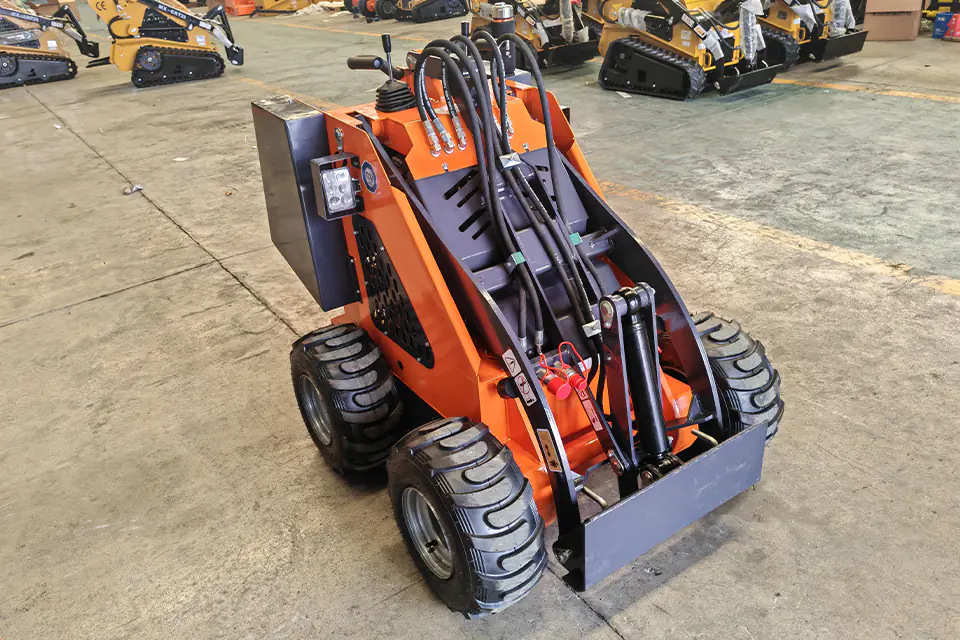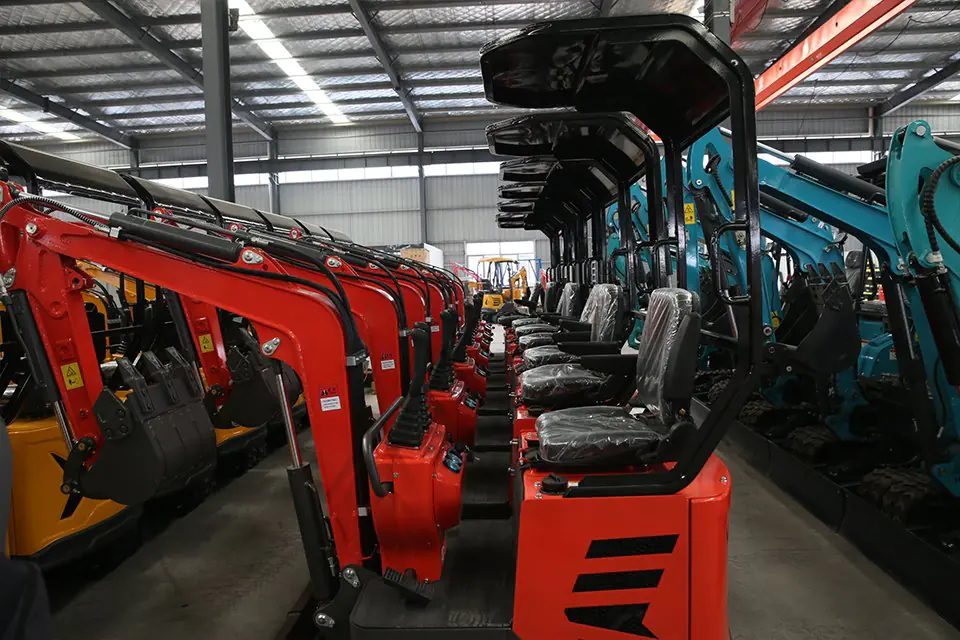Learning how to operate a mini excavator can open up a world of possibilities for your next construction or landscaping project. Whether you’re digging trenches, grading land, or working in tight spaces, a mini excavator is a versatile piece of equipment that gets the job done efficiently. In this comprehensive guide, we’ll explore everything you need to know about using a mini excavator, from basic controls to safety tips, ensuring you can tackle your projects with confidence.

What Is a Mini Excavator and How Does It Differ from a Standard Excavator?
A mini excavator is a compact version of a standard excavator, typically weighing less than 20,000 pounds. Unlike larger excavators, mini excavators are lighter and smaller, making them easier to maneuver in tight spaces and on job sites with limited access. They are ideal for projects like digging trenches, removing small structures, and landscaping projects.
Key Differences:
- Size and Weight: Mini excavators are significantly smaller than standard excavators.
- Maneuverability: They can rotate a full 360 degrees, making them versatile in confined areas.
- Transportation: Easier to transport due to their compact size.
- Attachments: Capable of using various attachments like buckets, hammers, and grapples.
By understanding these differences, you can determine whether a mini excavator is suitable for your specific needs.
Why Use a Mini Excavator for Your Next Project?
Using a mini excavator can greatly enhance efficiency and productivity on your next project. Here’s why:
- Versatility: Perfect for a range of tasks, including excavation, grading, and demolition.
- Access: Ideal for sites with limited space where larger equipment can’t reach.
- Cost-Effective: Lower operating costs compared to larger machinery.
- Ease of Use: User-friendly controls make it accessible even for novice operators.
If you’re considering adding a mini excavator to your equipment lineup, our 0.8 Ton Mini Excavator is an excellent starting point.
Understanding the Controls: How Do You Operate the Machine?
Before you operate the machine, it’s crucial to become familiar with the controls within the cab of the mini excavator.
Primary Controls:
- Left Joystick: Controls the swing and the boom functions.
- Right Joystick: Manages the stick and bucket movements.
- Foot Pedals: Used for auxiliary functions like operating certain attachments.
Tips:
- Read the Manual: Each machine may have slight differences.
- Practice Movements: In a safe area, practice moving the joysticks to understand how the machine responds.
- Understand the Indicators: Familiarize yourself with all gauges and indicators in the cab.
By mastering these controls, you’ll be able to maneuver the machine with confidence.

Preparing the Job Site: What Should You Check Before Starting?
A successful operation begins with proper preparation.
Pre-Operation Checklist:
- Inspect the Machine:
- Check for any signs of leak such as oil, coolant, or hydraulic fluid.
- Ensure all lubricant and coolant levels are adequate.
- Safety Equipment:
- Wear a hard hat, safety boots, and reflective clothing.
- Ensure all mirrors and cameras are clean and functional.
- Job Site Assessment:
- Identify any underground utilities before digging.
- Plan the dumping location for excavated material.
By addressing these points, you ensure a safer and more efficient work environment.
Getting into the Cab: How to Safely Enter and Familiarize Yourself
Entering the cab safely is an often-overlooked step.
Steps to Enter the Cab:
- Three Points of Contact: Always maintain three points of contact when climbing into the cab—two hands and one foot or vice versa.
- Adjust the Seat: Make sure the seat is adjusted for comfort and optimal control reach.
- Fasten Seatbelt: Always buckle up before operating.
Once inside, take a moment to become familiar with all controls and their functions.
Basic Operations: How to Move and Maneuver the Machine
Moving the mini excavator requires coordination.
Moving Forward and Backward:
- Travel Levers/Pedals: Use the levers or pedals to move the machine forward or backward.
- Speed Settings: Set your engine speed appropriately for the task.
Turning:
- Skid Steering: By manipulating the travel levers, you can turn the machine to the left or right.
Remember, practice makes perfect. Start slowly to get a feel for the machine’s responsiveness.

Operating the Boom and Bucket: What Are the Joystick Controls?
Understanding the joystick controls is essential for effective excavation.
Left Joystick:
- Push Forward: Lowers the boom.
- Pull Back: Raises the boom.
- Move Left/Right: Swings the cab and boom assembly.
Right Joystick:
- Push Forward: Moves the stick away.
- Pull Back: Brings the stick closer.
- Move Left/Right: Controls the bucket curl and dump.
By coordinating both joysticks, you can perform complex movements needed for excavation.
Working in Tight Spaces: Tips for Maneuvering and Excavation
Mini excavators are designed for tight spaces, but it still requires skill to navigate.
Tips:
- Plan Your Movements: Know where you need to go before you start moving.
- Use the Boom Swing: Utilize the boom’s ability to swivel independently of the cab to dig alongside walls or obstacles.
- Monitor Your Surroundings: Constantly check for obstacles to avoid accidents.
For projects requiring precision in confined areas, consider the 1.2 Ton (2500 Lb) Mini Excavator for its compact size and efficiency.
Safety Tips: How to Operate a Mini Excavator Safely
Safety should always be your top priority.
Key Safety Measures:
- Conduct Regular Inspections: Before each use, check the machine for any issues.
- Stay Aware of Your Surroundings: Be mindful of people, power lines, and other equipment.
- Avoid Overloading: Do not exceed the machine’s capacity.
- Use Proper Signals: If working with a team, establish clear communication signals.
Following these safety tips ensures that you and those around you remain safe during operation.

Choosing the Right Attachments for Your Project
The versatility of a mini excavator is enhanced by the variety of attachments available.
Common Attachments:
- Buckets: Varying sizes for digging and trenching.
- Augers: For drilling holes.
- Thumbs: For grabbing and holding materials.
- Hydraulic Hammers: For breaking concrete or rock.
Selecting the right attachment can make your work more efficient and is crucial for specialized tasks.
Maintenance Checks: How to Ensure Your Mini Excavator Is in Top Shape
Regular maintenance prolongs the life of your equipment.
Maintenance Tips:
- Daily Checks: Inspect tracks, look for leaks, and ensure all joints are lubricated.
- Scheduled Servicing: Adhere to the manufacturer’s recommended service intervals.
- Clean After Use: Remove dirt and debris to prevent wear and corrosion.
By keeping the machine well-maintained, you reduce downtime and extend its operational lifespan.
Should You Rent a Mini Excavator or Buy One?
Deciding whether to rent a mini excavator or purchase one depends on several factors.
Considerations:
- Project Frequency: For occasional use, renting may be more cost-effective.
- Budget Constraints: Purchasing requires a significant upfront investment.
- Equipment Rental Availability: Check local equipment rental companies for options.
- Long-Term Needs: For long-term projects, owning could be more economical.
If you’re looking to purchase, explore our range of mini excavators, including the Chinese 1 Ton Mini Excavator.

Exploring Popular Mini Excavator Brands
There are numerous brands offering mini excavators, each with unique features.
Top Brands:
- Dig-Boy: Known for durable and efficient machines.
- Bobcat: Offers a wide range of sizes and attachments.
- Kubota: Renowned for reliability and performance.
Choosing the right brand depends on your specific needs, budget, and the support available in your area.
Frequently Asked Questions
Q1: Can I operate a mini excavator without prior experience?
A: While it’s possible, it’s recommended to receive proper training to safely operate the machine.
Q2: What are the common uses for mini excavators?
A: They are versatile machines used for digging trenches, landscaping, demolition of small structures, and more.
Q3: How deep can a mini excavator dig?
A: The dig depth varies by model but typically ranges from 6 to 12 feet.
Conclusion: Mastering the Mini Excavator
Becoming a proficient mini excavator operator involves understanding the machine, practicing the controls, and prioritizing safety. Whether you’re renting for a one-time project or investing in your own equipment, the mini excavator is a valuable asset in any construction or landscaping endeavor.
Key Takeaways
- Familiarize Yourself: Understand the controls and functions before operation.
- Safety First: Always conduct pre-operation checks and be mindful of your surroundings.
- Choose the Right Equipment: Select the appropriate attachments and consider whether renting or buying suits your needs.
- Practice Makes Perfect: Build your skills through experience to increase efficiency and safety.
Ready to take the next step? Explore our range of mini excavators like the 1.3 Ton/3000 Lb Mini Excavator to find the perfect fit for your projects.












